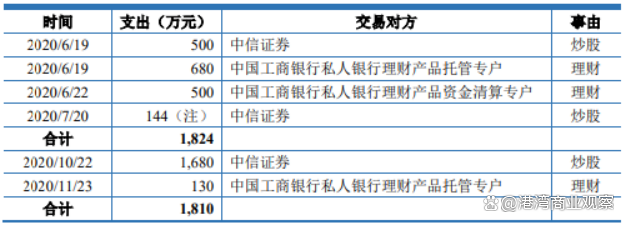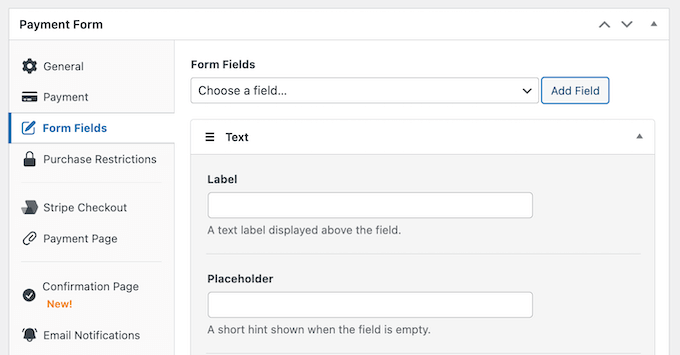一、源码阅读
让我们进行源码阅读把。
1.1 阅读源码基础:
@Import(xxx.class)里的类可以有两种类:
- ImportSelector接口的实现类;
- ImportBeanDefinitionRegistrar接口的实现类;
两种接口简介:
-
ImportSelector接口:在配置类中被@Import加入到Spring容器中以后。Spring容器就会把ImportSelector接口方法返回的字符串数组中的类new出来对象然后放到工厂中去。
-
ImportBeanDefinitionRegistrar:ImportBeanDefinitionRegistrar接口是也是spring的扩展点之一,它可以支持我们自己写的代码封装成BeanDefinition对象,注册到Spring容器中,功能类似于注解@Service @Component。
Spring框架中ImportBeanDefinitionRegistrar的应用详解
ImportBeanDefinitionRegistrar的作用
1.2 CachingConfigurationSelector

@EnableCaching导入了CachingConfigurationSelector。
org.springframework.cache.annotation.CachingConfigurationSelector:
@Override
public String[] selectImports(AdviceMode adviceMode) {
switch (adviceMode) {
case PROXY:
return getProxyImports();
case ASPECTJ:
return getAspectJImports();
default:
return null;
}
}
getProxyImports方法:
private String[] getProxyImports() {
List<String> result = new ArrayList<>(3);
//将AutoProxyRegistrar注入到容器
result.add(AutoProxyRegistrar.class.getName());
result.add(ProxyCachingConfiguration.class.getName());
if (jsr107Present && jcacheImplPresent) {
result.add(PROXY_JCACHE_CONFIGURATION_CLASS);
}
return StringUtils.toStringArray(result);
}
getAspectJImports方法:
private String[] getAspectJImports() {
List<String> result = new ArrayList<>(2);
result.add(CACHE_ASPECT_CONFIGURATION_CLASS_NAME);
if (jsr107Present && jcacheImplPresent) {
result.add(JCACHE_ASPECT_CONFIGURATION_CLASS_NAME);
}
return StringUtils.toStringArray(result);
}
1.3 getProxyImports方法内部
1.3.1 AutoProxyRegistrar
顾名思义,AutoProxyRegistrar从名称上就可以看出其本质是一个ImportBeanDefinitionRegistrar,而ImportBeanDefinitionRegistrar最重要的方法为registerBeanDefinitions(),这个方法的主要作用就是用方法参数中的registry向容器中注入一些BeanDefinition。
源码追踪:
@Override
public void registerBeanDefinitions(AnnotationMetadata importingClassMetadata, BeanDefinitionRegistry registry) {
boolean candidateFound = false;
Set<String> annTypes = importingClassMetadata.getAnnotationTypes();
//1.遍历类元数据中的所有注解类型
for (String annType : annTypes) {
AnnotationAttributes candidate = AnnotationConfigUtils.attributesFor(importingClassMetadata, annType);
if (candidate == null) {
continue;
}
Object mode = candidate.get("mode");
Object proxyTargetClass = candidate.get("proxyTargetClass");
//2.检查每个注解是否包含mode和proxyTargetClass属性,并判断其类型是否正确。
if (mode != null && proxyTargetClass != null && AdviceMode.class == mode.getClass() &&
Boolean.class == proxyTargetClass.getClass()) {
candidateFound = true;
//3.如果属性类型正确且mode为AdviceMode.PROXY,则根据proxyTargetClass值配置自动代理创建器。
if (mode == AdviceMode.PROXY) {
AopConfigUtils.registerAutoProxyCreatorIfNecessary(registry);
if ((Boolean) proxyTargetClass) {
AopConfigUtils.forceAutoProxyCreatorToUseClassProxying(registry);
return;
}
}
}
}
if (!candidateFound && logger.isInfoEnabled()) {
String name = getClass().getSimpleName();
logger.info(String.format("%s was imported but no annotations were found " +
"having both 'mode' and 'proxyTargetClass' attributes of type " +
"AdviceMode and boolean respectively. This means that auto proxy " +
"creator registration and configuration may not have occurred as " +
"intended, and components may not be proxied as expected. Check to " +
"ensure that %s has been @Import'ed on the same class where these " +
"annotations are declared; otherwise remove the import of %s " +
"altogether.", name, name, name));
}
}
该方法用于注册Bean定义。主要功能如下:
- 遍历类元数据中的所有注解类型。
- 检查每个注解是否包含mode和proxyTargetClass属性,并判断其类型是否正确。
- 如果属性类型正确且mode为AdviceMode.PROXY,则根据proxyTargetClass值配置自动代理创建器。



下面这是@EnableCaching里的mode值和proxyTargetClass值:

下面这个是@Configration注解里的mode值和proxyTargetClass的值,可以看到是null

友友们,这两个值是从哪来的呢?看这里:

其实就是注解里定义的呀。那么问题来了,这两个值是干嘛的,什么情况下要定义这两个值?
拿@EnableCaching 里的这两个值打个比方。它提供了几个属性来控制缓存的行为:
- mode():此属性决定了 Spring AOP(面向切面编程)使用的模式。它可以取两个值:
AdviceMode.PROXY:表示使用代理模式实现AOP,这是默认值。
AdviceMode.ASPECTJ:表示使用 AspectJ 模式实现AOP。- proxyTargetClass():此属性仅在 mode 设置为 AdviceMode.PROXY 时有效。它指定了是否使用 CGLIB 代理(true)而不是 >JDK 动态代理(false,默认)。CGLIB 代理可以代理不可代理的类(即没有实现接口的类),而 JDK 动态代理只能代理实现了接口的类。
这些属性帮助开发者根据应用的需求选择合适的代理机制,从而更灵活地管理缓存逻辑。
拓展:AutoProxyRegistrar里关键代码分析
1.3.1.1 AutoProxyRegistrar.registerBeanDefinitions()方法总结
总结:AutoProxyRegistrar.registerBeanDefinitions()往容器中注入了一个类InfrastructureAdvisorAutoProxyCreator。
这段是不是很熟悉,没错,声明式事务中注入的也是这个InfrastructureAdvisorAutoProxyCreator类,用来生成代理对象。
1.3.2 ProxyCachingConfiguration
ProxyCachingConfiguration向Spring容器中注入了三个Bean:
- BeanFactoryCacheOperationSourceAdvisor:切面,用来匹配目标方法和目标类,看那些方法需要实现缓存的增强;
- CacheOperationSource:用来解析缓存相关的注解;
- CacheInterceptor:实现了Advice,是一个通知,实现对目标方法的增强。
@Configuration
@Role(BeanDefinition.ROLE_INFRASTRUCTURE)
public class ProxyCachingConfiguration extends AbstractCachingConfiguration {
@Bean(name = CacheManagementConfigUtils.CACHE_ADVISOR_BEAN_NAME)
@Role(BeanDefinition.ROLE_INFRASTRUCTURE)
public BeanFactoryCacheOperationSourceAdvisor cacheAdvisor() {
BeanFactoryCacheOperationSourceAdvisor advisor = new BeanFactoryCacheOperationSourceAdvisor();
advisor.setCacheOperationSource(cacheOperationSource());
advisor.setAdvice(cacheInterceptor());
if (this.enableCaching != null) {
advisor.setOrder(this.enableCaching.<Integer>getNumber("order"));
}
return advisor;
}
@Bean
@Role(BeanDefinition.ROLE_INFRASTRUCTURE)
public CacheOperationSource cacheOperationSource() {
return new AnnotationCacheOperationSource();
}
@Bean
@Role(BeanDefinition.ROLE_INFRASTRUCTURE)
public CacheInterceptor cacheInterceptor() {
CacheInterceptor interceptor = new CacheInterceptor();
interceptor.configure(this.errorHandler, this.keyGenerator, this.cacheResolver, this.cacheManager);
interceptor.setCacheOperationSource(cacheOperationSource());
return interceptor;
}
}
ProxyCachingConfiguration继承自AbstractCachingConfiguration,AbstractCachingConfiguration是抽象基础配置类,为启用Spring的注解驱动的缓存管理功能提供通用结构;代码如下:

1.3.2.1 BeanFactoryCacheOperationSourceAdvisor
BeanFactoryCacheOperationSourceAdvisor是一个切面,切面需要包括通知和切点:
- Advice通知:CacheInterceptor,由ProxyCachingConfiguration注入;
- Pointcut切点:内部CacheOperationSourcePointcut类型的属性;
1.3.2.2 CacheOperationSourcePointcut
Pointcut主要包含两部分,对目标类的匹配,对目标方法的匹配。
对目标类的匹配,其实啥也没干,返回true,主要逻辑在对目标方法的匹配上,大部分Pointcut都是如此:
private class CacheOperationSourceClassFilter implements ClassFilter {
@Override
public boolean matches(Class<?> clazz) {
if (CacheManager.class.isAssignableFrom(clazz)) {
return false;
}
// 啥也没干
CacheOperationSource cas = getCacheOperationSource();
return (cas == null || cas.isCandidateClass(clazz));
}
}
对目标方法的匹配:
public boolean matches(Method method, Class<?> targetClass) {
CacheOperationSource cas = getCacheOperationSource();
/**
* @see AbstractFallbackCacheOperationSource#getCacheOperations(java.lang.reflect.Method, java.lang.Class)
*/
// 就是看目标方法上面有没有缓存注解
return (cas != null && !CollectionUtils.isEmpty(cas.getCacheOperations(method, targetClass)));
}
这里会委托给CacheOperationSource来解析缓存注解,这个类是在ProxyCachingConfiguration中注入的。
1.3.3 org.springframework.cache.jcache.config.ProxyJCacheConfiguration
@Configuration
@Role(BeanDefinition.ROLE_INFRASTRUCTURE)
public class ProxyCachingConfiguration extends AbstractCachingConfiguration {
@Bean(name = CacheManagementConfigUtils.CACHE_ADVISOR_BEAN_NAME)
@Role(BeanDefinition.ROLE_INFRASTRUCTURE)
public BeanFactoryCacheOperationSourceAdvisor cacheAdvisor() {
BeanFactoryCacheOperationSourceAdvisor advisor = new BeanFactoryCacheOperationSourceAdvisor();
advisor.setCacheOperationSource(cacheOperationSource());
advisor.setAdvice(cacheInterceptor());
if (this.enableCaching != null) {
advisor.setOrder(this.enableCaching.<Integer>getNumber("order"));
}
return advisor;
}
@Bean
@Role(BeanDefinition.ROLE_INFRASTRUCTURE)
public CacheOperationSource cacheOperationSource() {
return new AnnotationCacheOperationSource();
}
@Bean
@Role(BeanDefinition.ROLE_INFRASTRUCTURE)
public CacheInterceptor cacheInterceptor() {
CacheInterceptor interceptor = new CacheInterceptor();
interceptor.configure(this.errorHandler, this.keyGenerator, this.cacheResolver, this.cacheManager);
interceptor.setCacheOperationSource(cacheOperationSource());
return interceptor;
}
}
ProxyCachingConfiguration向Spring容器中注入了三个Bean:
- BeanFactoryCacheOperationSourceAdvisor:切面,用来匹配目标方法和目标类,看那些方法需要实现缓存的增强;
- CacheOperationSource:用来解析缓存相关的注解;
- CacheInterceptor:实现了Advice,是一个通知,实现对目标方法的增强。
1.3.3.1 BeanFactoryCacheOperationSourceAdvisor
BeanFactoryCacheOperationSourceAdvisor是一个切面,切面需要包括通知和切点:
- Advice通知:CacheInterceptor,由ProxyCachingConfiguration注入;
- Pointcut切点:内部CacheOperationSourcePointcut类型的属性;
1.3.3.2 CacheOperationSourcePointcut
Pointcut主要包含两部分,对目标类的匹配,对目标方法的匹配。
对目标类的匹配,其实啥也没干,返回true,主要逻辑在对目标方法的匹配上,大部分Pointcut都是如此:

abstract class CacheOperationSourcePointcut extends StaticMethodMatcherPointcut implements Serializable {
@Override
public boolean matches(Method method, Class<?> targetClass) {
if (CacheManager.class.isAssignableFrom(targetClass)) {
return false;
}
// 就是看目标方法上面有没有缓存注解
CacheOperationSource cas = getCacheOperationSource();
return (cas != null && !CollectionUtils.isEmpty(cas.getCacheOperations(method, targetClass)));
}
}
这里会委托给CacheOperationSource来解析缓存注解,这个类是在ProxyCachingConfiguration中注入的。
最终会调用到org.springframework.cache.annotation.SpringCacheAnnotationParser#parseCacheAnnotations(org.springframework.cache.annotation.SpringCacheAnnotationParser.DefaultCacheConfig, java.lang.reflect.AnnotatedElement, boolean)
private Collection<CacheOperation> parseCacheAnnotations(
DefaultCacheConfig cachingConfig, AnnotatedElement ae, boolean localOnly) {
Collection<? extends Annotation> anns = (localOnly ?
AnnotatedElementUtils.getAllMergedAnnotations(ae, CACHE_OPERATION_ANNOTATIONS) :
AnnotatedElementUtils.findAllMergedAnnotations(ae, CACHE_OPERATION_ANNOTATIONS));
if (anns.isEmpty()) {
return null;
}
// @Cacheable解析为CacheableOperation
// @CacheEvict解析为CacheEvictOperation
// @CachePut解析为CachePutOperation
final Collection<CacheOperation> ops = new ArrayList<>(1);
anns.stream().filter(ann -> ann instanceof Cacheable).forEach(
ann -> ops.add(parseCacheableAnnotation(ae, cachingConfig, (Cacheable) ann)));
anns.stream().filter(ann -> ann instanceof CacheEvict).forEach(
ann -> ops.add(parseEvictAnnotation(ae, cachingConfig, (CacheEvict) ann)));
anns.stream().filter(ann -> ann instanceof CachePut).forEach(
ann -> ops.add(parsePutAnnotation(ae, cachingConfig, (CachePut) ann)));
anns.stream().filter(ann -> ann instanceof Caching).forEach(
ann -> parseCachingAnnotation(ae, cachingConfig, (Caching) ann, ops));
return ops;
}
1.3.3.3 CacheInterceptor
CacheInterceptor是一个Advice,用来实现对目标方法的增强,当调用目标方法时会先进入CacheInterceptor.invoke()方法:
org.springframework.cache.interceptor.CacheInterceptor#invoke
public class CacheInterceptor extends CacheAspectSupport implements MethodInterceptor, Serializable {
@Override
@Nullable
public Object invoke(final MethodInvocation invocation) throws Throwable {
Method method = invocation.getMethod();
CacheOperationInvoker aopAllianceInvoker = () -> {
try {
// 调用目标方法,后面的代码会回调到这里
return invocation.proceed();
}
catch (Throwable ex) {
throw new CacheOperationInvoker.ThrowableWrapper(ex);
}
};
try {
return execute(aopAllianceInvoker, invocation.getThis(), method, invocation.getArguments());
}
catch (CacheOperationInvoker.ThrowableWrapper th) {
throw th.getOriginal();
}
}
}
org.springframework.cache.interceptor.CacheAspectSupport#execute(org.springframework.cache.interceptor.CacheOperationInvoker, java.lang.reflect.Method, org.springframework.cache.interceptor.CacheAspectSupport.CacheOperationContexts)
private Object execute(final CacheOperationInvoker invoker, Method method, CacheOperationContexts contexts) {
// Special handling of synchronized invocation
if (contexts.isSynchronized()) { // false不会进入
CacheOperationContext context = contexts.get(CacheableOperation.class).iterator().next();
if (isConditionPassing(context, CacheOperationExpressionEvaluator.NO_RESULT)) {
Object key = generateKey(context, CacheOperationExpressionEvaluator.NO_RESULT);
Cache cache = context.getCaches().iterator().next();
try {
return wrapCacheValue(method, handleSynchronizedGet(invoker, key, cache));
}
catch (Cache.ValueRetrievalException ex) {
// Directly propagate ThrowableWrapper from the invoker,
// or potentially also an IllegalArgumentException etc.
ReflectionUtils.rethrowRuntimeException(ex.getCause());
}
}
else {
// No caching required, only call the underlying method
return invokeOperation(invoker);
}
}
// Process any early evictions
// 先调用@CacheEvict注解中的属性beforeInvocation=true的,实际上这个值默认为false,这里一般不会干啥,看后面的调用
// cache.evict()
processCacheEvicts(contexts.get(CacheEvictOperation.class), true,
CacheOperationExpressionEvaluator.NO_RESULT);
// Check if we have a cached item matching the conditions
// cache.get()
Cache.ValueWrapper cacheHit = findCachedItem(contexts.get(CacheableOperation.class));
// Collect puts from any @Cacheable miss, if no cached item is found
List<CachePutRequest> cachePutRequests = new LinkedList<>();
if (cacheHit == null) {
collectPutRequests(contexts.get(CacheableOperation.class),
CacheOperationExpressionEvaluator.NO_RESULT, cachePutRequests);
}
Object cacheValue;
Object returnValue;
if (cacheHit != null && !hasCachePut(contexts)) {
// If there are no put requests, just use the cache hit
cacheValue = cacheHit.get();
returnValue = wrapCacheValue(method, cacheValue);
}
else {
// Invoke the method if we don't have a cache hit
// 调用目标方法
returnValue = invokeOperation(invoker);
cacheValue = unwrapReturnValue(returnValue);
}
// Collect any explicit @CachePuts
collectPutRequests(contexts.get(CachePutOperation.class), cacheValue, cachePutRequests);
// Process any collected put requests, either from @CachePut or a @Cacheable miss
for (CachePutRequest cachePutRequest : cachePutRequests) {
cachePutRequest.apply(cacheValue);
}
// Process any late evictions
// 调用@CacheEvict注解中的属性beforeInvocation=false的
processCacheEvicts(contexts.get(CacheEvictOperation.class), false, cacheValue);
return returnValue;
}
1.4 扩展缓存注解
有时候由于业务需要或者Spring提供的缓存不满足我们的要求,如无法解决缓存雪崩问题,扩展步骤如下:
- 实现CacheManager接口或继承AbstractCacheManager,管理自身的cache实例,也可以直接使用内置的SimpleCacheManager;
- 实现Cache接口,自定义缓存实现逻辑;
- 将自定义的Cache和CacheManager进行关联并注入到Spring容器中。













![[FireshellCTF2020]Caas1](https://i-blog.csdnimg.cn/direct/9191490b0dbb48a89191d46bcf85287e.png)





